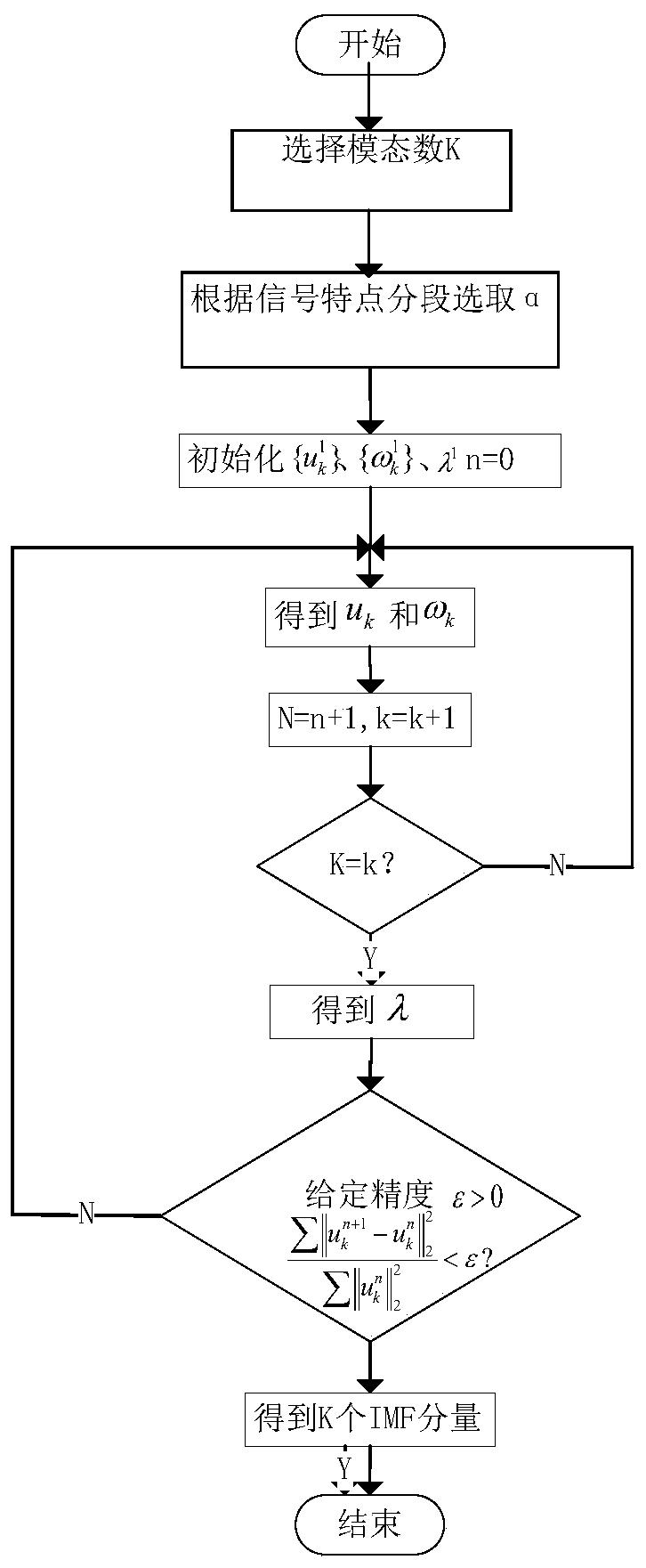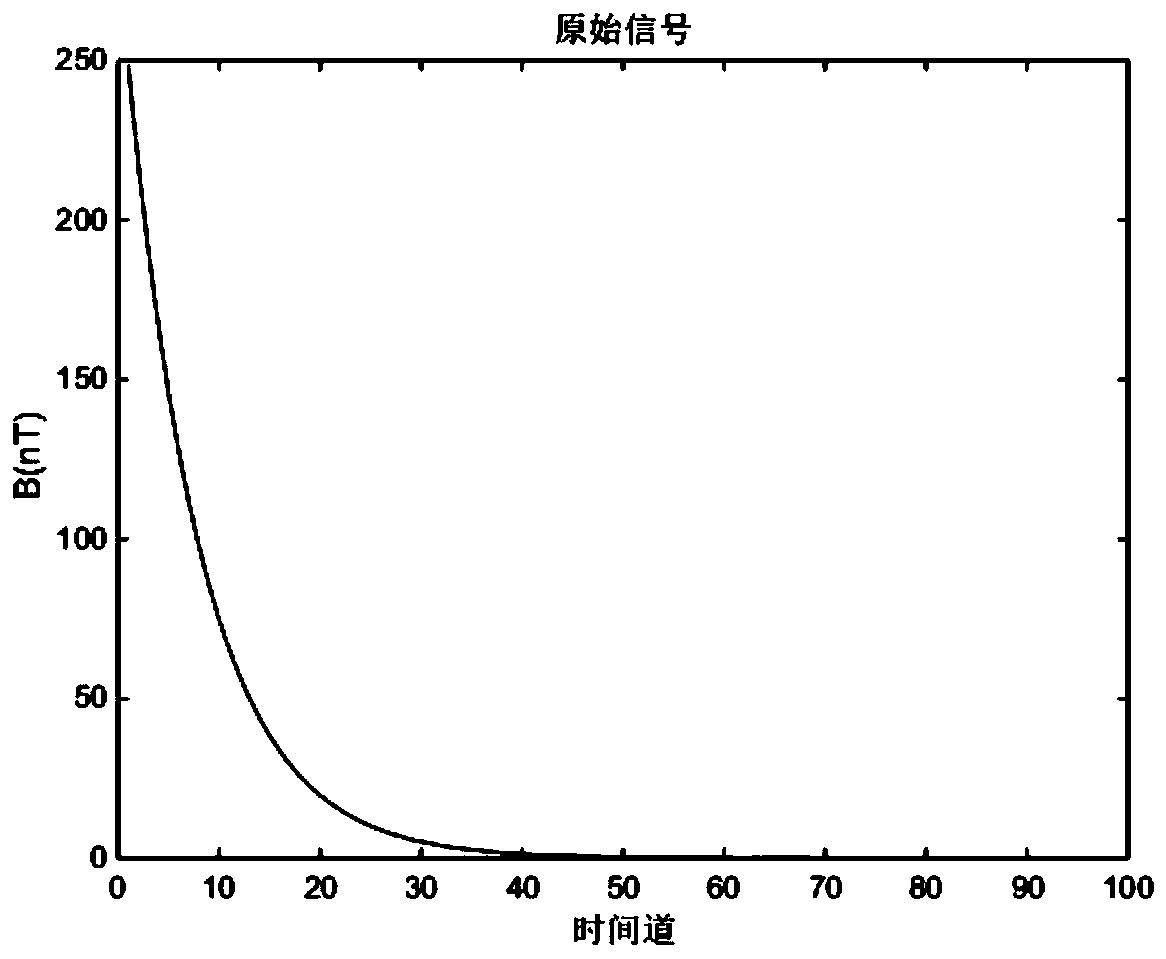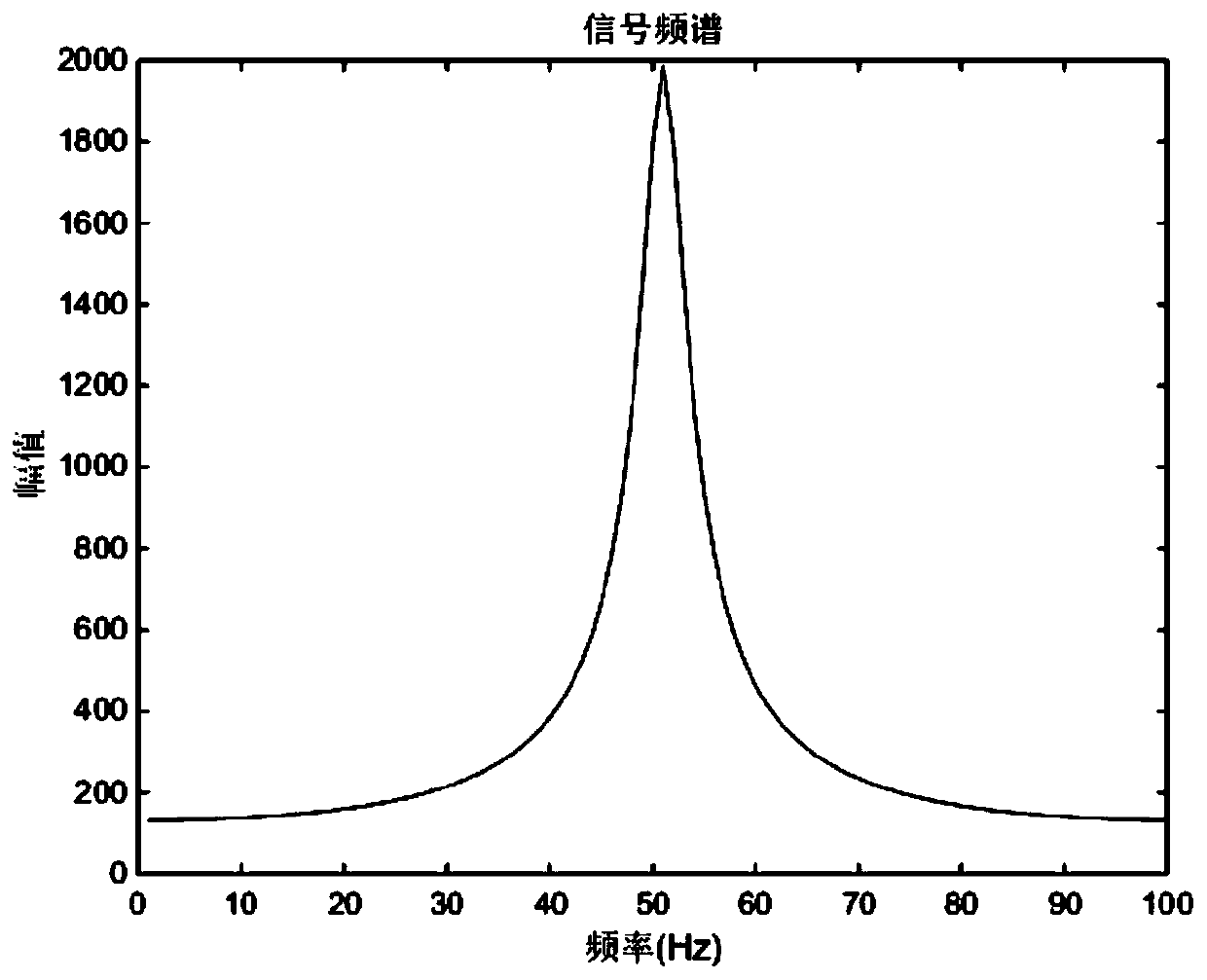Transient electromagnetic signal-to-noise separation method based on variational mode decomposition principle
A variational modal decomposition and transient electromagnetic technology, which can be used in electrical/magnetic exploration, geophysical measurement, and re-radiation of sound waves, and can solve problems such as transient electromagnetic data interference.
- Summary
- Abstract
- Description
- Claims
- Application Information
AI Technical Summary
Problems solved by technology
Method used
Image
Examples
Embodiment Construction
[0037] In order to make the object, technical solution and advantages of the present invention more clear, the present invention will be further described in detail below in conjunction with the examples. It should be understood that the specific embodiments described here are only used to explain the present invention, not to limit the present invention.
[0038] see figure 1 As shown, a transient electromagnetic signal-to-noise separation method based on the principle of variational mode decomposition, decomposes the ground-space electromagnetic data to obtain K modal functions, takes the minimum sum of estimated bandwidths of each component as a constraint, and uses alternating direction The multiplier method continuously updates each mode and its center frequency, and then adaptively separates the bandwidth and center frequency of each component in the frequency domain, so as to properly balance the errors between them, and presents the e-exponential attenuation according ...
PUM
 Login to View More
Login to View More Abstract
Description
Claims
Application Information
 Login to View More
Login to View More - R&D
- Intellectual Property
- Life Sciences
- Materials
- Tech Scout
- Unparalleled Data Quality
- Higher Quality Content
- 60% Fewer Hallucinations
Browse by: Latest US Patents, China's latest patents, Technical Efficacy Thesaurus, Application Domain, Technology Topic, Popular Technical Reports.
© 2025 PatSnap. All rights reserved.Legal|Privacy policy|Modern Slavery Act Transparency Statement|Sitemap|About US| Contact US: help@patsnap.com



